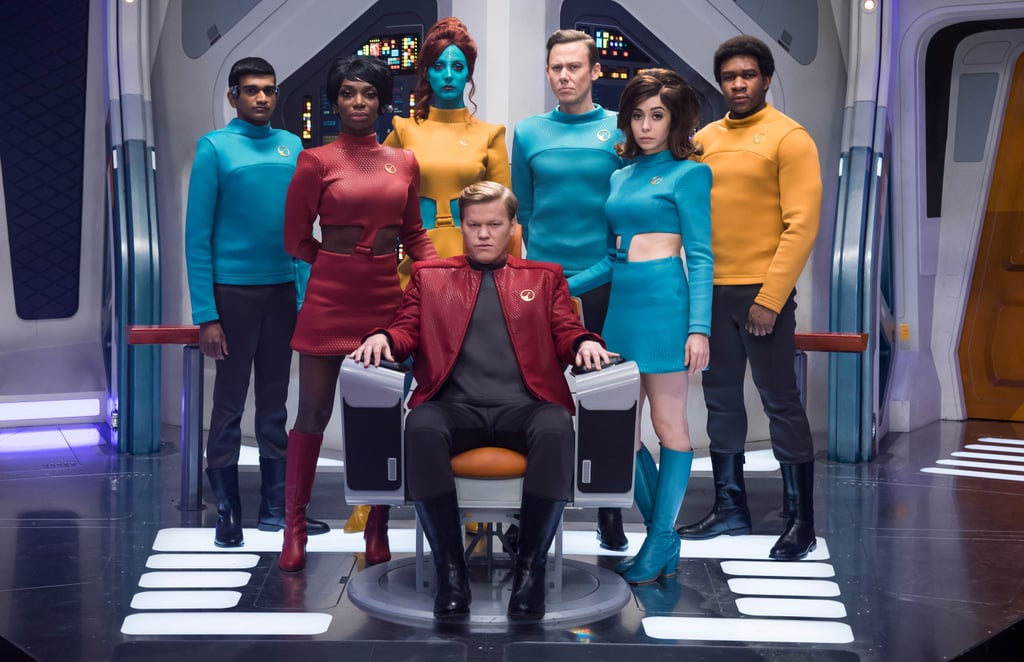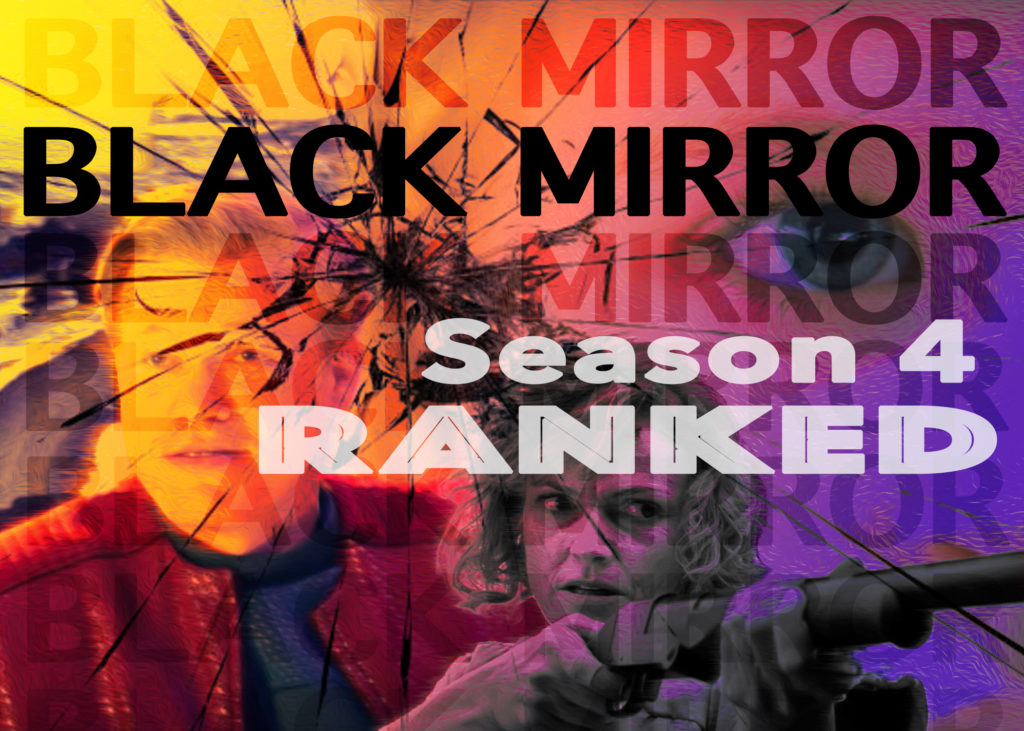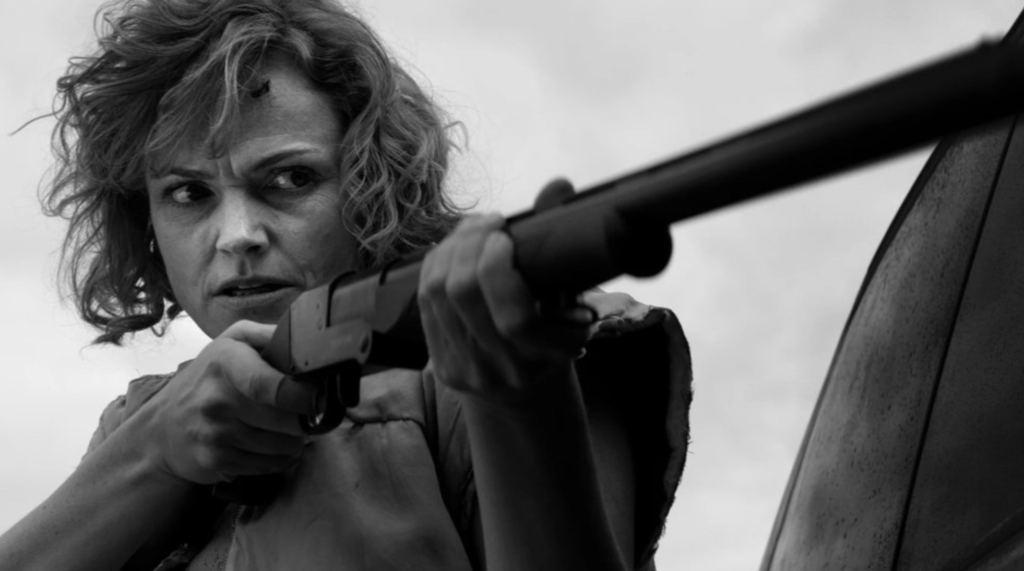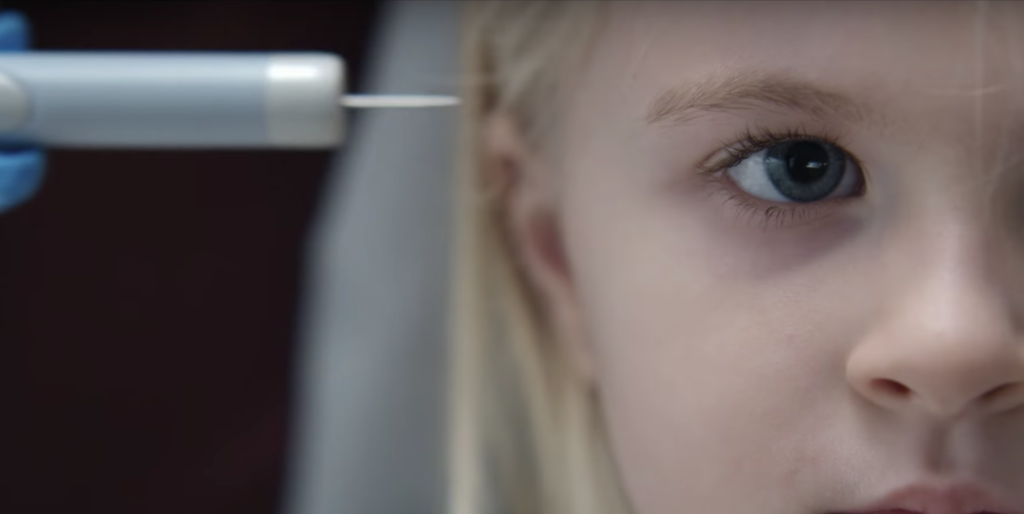Okay, stop. Before we get any further, I want to clear up one thing. When you approach a show like Black Mirror, I find that it’s better to go into each episode knowing NOTHING. Don’t read the synopsis, don’t ask your friends what any of them are about. Heck, it’s risky enough just looking at the title and screenshot on Netflix.
There’s a reason for this. If you’re not familiar with Black Mirror, it’s an anthology show created by Charlie Brooker. Each episode has a different story and characters, but they share one unifying theme: The danger of technology. And on a deeper level, the fear of the future; or maybe more importantly, the fear of our selves – and what we’re capable of. The show uses near-future technology as a cautionary device to warn us about what can go wrong if we don’t think about the implications of our actions. If we let our thirst for innovation surpass our ability to regulate our greed. As Black Mirror often illustrates, in devastating fashion, greed comes in many forms. There’s greed for money, of course. But even the greed for money has deeper roots. There’s greed for information (to either benefit ourselves, or to harm others). Greed for control, greed for power. Greed for social position. Greed for sex. Imagine if all of our dangerous human impulses were aided by a rapid rise in technology. Technology that makes it easier to attain the things we want or need, both for good and for bad. That’s the world of Black Mirror. It’s a world not so different from our own.
Dang it, I’m getting ahead of myself. See, that’s what Black Mirror tends to do. It ignites our imaginations in a way few shows can – partially because the horrors that we see in Black Mirror are not that far from our eventual reality.
The reason it’s beneficial to watch each episode without knowing anything beforehand is actually simple. It’s just more fun. It’s more rewarding to just fire up Netflix, click the button a couple times, and launch yourself into the eerie abyss that is Black Mirror. Don’t let any preconceived notions cloud your enjoyment of whatever insane story you find yourself in. If you do that…you glide through each show with the feeling that anything is possible. That there’s something strange and horrifying and wondrous around every corner. That’s when this show is best. When you have no idea what you’re getting yourself into, and yet you can’t turn away. No matter how terrifying it gets.
So that’s my forewarning. If you haven’t watched all these episodes, there may be spoilers ahead. I won’t give away the big reveals of these episodes, but I will be discussing certain plot points and themes in each installment. Proceed with caution. If you’re already familiar with Black Mirror, and you’re just looking for a recommendation on which episodes are actually worth watching (some people only watch the very best episodes), click here for a simple ranking of Season 4, sans description.
Otherwise, let’s jump right in to these murky black waters.
*POTENTIAL SPOILERS AHEAD*
-
Metalhead
I don’t dislike this episode. I don’t dislike any Black Mirror episode, really. They all have something worthwhile and interesting, even if they don’t knock it out of the park. Metalhead is more of a chase sequence than a story. There are glimpses of exposition buried here, amidst the abandoned warehouses and mansions of a dystopian countryside. The world has gone sour. There are bands of wanderers, armed with makeshift weaponry, cautious and yet experienced in fear and survival. There are killer robot dogs, with self-charging batteries and guns for paws. While out on an expedition to obtain some unknown goods, three friends stumble across one of these killer dogs. The rest of the episode is a chase. And don’t get me wrong, it’s a thrilling one. But without much more context, the episode is limited in what it can accomplish on a philosophical level. The best Black Mirror episodes fuse intense action or tension with deep existential questions about our humanity. Metalhead does not give us that. But it does take us on a heart-pounding ride through a future apocalyptic world that is not so different from our own. Was the chase worth it? That’s the question here, for both the viewer AND the characters.
-
Crocodile

Each Black Mirror season seems to have an episode devoted to pure bleakness. In Season 2 it was White Bear, and maybe even more so, White Christmas. In Season 3 it was Shut Up and Dance (jeez, that one was DARK). In Season 4, it’s Crocodile. We meet Mia as she’s traveling across frozen Iceland with her boyfriend. They’re smoking some weed, drinking a bit of liquor, enjoying each other’s company. Then their world turns upside down as they’re involved in a fatal hit and run. Scared of the repercussions of their crime (and the fact that they were drinking and smoking weed while driving), they “take care” of the body and continue on with their lives. Mia goes on to marry someone else, and she has a son. She achieves success as an architect, and is even giving lectures to others in her field. But then her ex-boyfriend shows up at her hotel room door. And he wants to come clean to their victim’s widow about what they did. She, decidedly, does not. To what lengths would you go to preserve your idyllic life? That’s the constant question in Crocodile. What would you do to keep up the charade of a seemingly normal and successful life. What would you risk? What would you give up? There’s some cool technology in this one, like in all Black Mirror episodes. But it’s largely overshadowed by the choices that Mia makes, and the consequences of those decisions. Looking to feel horrible about humanity for about an hour? Check out Crocodile!
-
Black Museum

Similar to White Christmas, in which a larger narrative houses a collection of shorter inter-related vignettes, Black Museum does something that no other Black Mirror episode has done before. It hints that all these episodes, from ALL the seasons…may be connected (gasp!). They may all be taking place in the same world. Before this episode, it was widely assumed that while each tale shared similarities in both technology and themes, each episode was stand-alone. Not related to others – maybe not even in the same universe. But Black Museum changes that. Which is compelling in its own right. A greedy individual named Rolo Hynes has opened up a roadside attraction called Black Museum, where items of infamous criminality are put on display. There’s a jumpsuit and mask from Season 2’s White Bear, there’s a tablet from Arkangel, there’s a tub from Crocodile, a “gizmo” from USS Callister, and other assorted Easter eggs from Black Mirror episodes past. A young British woman stumbles into the museum as she’s waiting for her car to power back up (in this world, apparently, everyone has solar chargers in their trunk).
Mr. Hynes takes her on a tour of the museum, and he tells her three fables about three exhibits in the museum. One is about a failing doctor who has an implant surgically imbedded behind his ear. The implant, installed with the help of Mr. Hynes, allows him to feel what his patients are feeling, thus allowing him to accurately diagnose their ailments. But eventually, the pain becomes his pleasure…to the detriment of himself and everyone around him. Another artifact from the museum sparks a story about the creation of conscience transfer. Rolo Hynes’ company has technology that allows a woman to transfer her conscience from her comatose body into her boyfriend’s head, in order to hug her son and see him grow up. The only problem is that she’s now his backseat (er, back-mind?) driver, and it causes both of them to resent each other. Can she stay in his head forever, or is there another option? The third exhibit they visit in the museum is the “main attraction” – a holographic projection of a convicted killer. His soul has been trapped in this hologram (thanks to none other than Rolo Hynes), and he is doomed to undergo the shock of the electric chair for any visitor who steps up to see him (hundreds, or thousands of people). But there’s more to this story than we are initially led to believe, and Mr. Rolo Hynes may finally be forced to atone for taking advantage of society’s weakest creatures. It’s the last episode of the season. And while it wasn’t my favorite episode, it did send the season off right. Just the right amount of terror and justice.
-
Hang the DJ

So we’ve reached the point on our list where each of the remaining episodes should be required viewing. If you’re here to see which episodes you absolutely HAVE to watch…Let’s get it going. If you don’t have the time, or the attention span, then go ahead and just forgot the previous three episodes. They’re good, don’t get me wrong! You should watch them! But if you’re here to know the absolute best, must-see episodes, you’ve arrived at your destination. Hang the DJ is a spin on dating app culture.
Two first timers, Frank and Amy, arrive at a restaurant. Everything is planned out for them – the table they sit at, the meal they eat, even the length of time they’ll be together. That’s right, the service tells them how long they will be together. It could be 12 hours, or it could be six months. See, in this world, when you sign up for this dating service, you are given a “coach.” It’s a little disc-shaped device with a Siri-like entity that guides you through the dating process. You start off with a few dates, and the system tracks your every move and word, learns how you react to people and things, and assigns you new partners to try out. Once it has gained enough knowledge, it will pair you up with “The One.” The perfect match for you. They claim their success rate to be 99.8% accurate. The only problem? Frank really likes Amy. Amy really likes Frank. And they only have a short time together. Will they stick to the system? Will they find a way to be together, even though the coach is trying to separate them? Or will they risk everything to be together? People are calling this the Season 4 version of San Junipero (arguably one of the best Black Mirror episodes to date, and one of the only optimistic yarns of the bunch). And maybe that’s accurate. But make no mistake, it’s a wonderful little story, with its own merits worth cherishing.
-
Arkangel
This could happen. That’s why this episode hits so close to home – especially if you’re a parent. The events of Arkangel feel so realistic. And while the technology still feels a bit out of our reach…it totally seems plausible in a not-so-distant future. Marie is an overprotective parent who has a close call one day when her 3-year-old daughter Sarah wanders away from the playground. Marie ends up finding her, but the experience of almost losing her child scares her on such a deep level that she resorts to drastic measures. She signs Sarah up to have a chip inserted in her head. Some sort of nanotechnology, from a company called Arkangel, that allows parents to track their children’s whereabouts. But it’s not just that. Marie can also use a tablet to see what her daughter is seeing. To know when her stress levels are rising. To check her vitals and do a sort of diagnostic health scan to see if she’s low on nutrients, or experiencing some sort of illness. She can even block Sarah from seeing “inappropriate” or disturbing images (for instance, a scary dog in the neighborhood is just a blurred-out blob, with drowned out noise, in Sarah’s vision).
At first, this new type of parental guidance and protection seems great. For anyone with young children, you can instantly imagine the possibilities. You can appreciate the value of always being able to know where your child is, and to know that they’re safe (or, if they are in danger, that there’s a way to help them quickly). But as Sarah grows up, it becomes more and more perilous. With the parental filter always turned on, she cannot learn to fear things that she needs to fear. And eventually, later in life she may end up craving the things that she was blocked from experiencing when she was young – similar to sheltered children that end up rebelling later in life. I felt very uncomfortable watching this. And I mean that in a very good way. This is Black Mirror at its finest – and quite possibly its most troubling.
-
USS Callister

The season opener starts things off on a high note. USS Callister starts with the twists right away. We’re initially led to believe that tall, socially awkward Robert Daly is someone to feel sorry for. But this is not a man to feel sorry for (or is he?). It turns out that he’s the Chief Technology Officer and founder of a successful virtual reality gaming company named Infinity, and he’s been secretly collecting the DNA of his associates and subordinates so that he can make digital copies of them to enslave in a private version of his popular game world. His little world is also a rip-off of the Star Trek universe, where he forces his digital crew to taxi him around on asinine missions to defeat his enemies (other people that he has digitally copied and transformed into beasts).
Aside from the engrossing plot, and a great ensemble cast led by Jesse Plemons as Robert Daly and Cristin Milioti as Nanette (the newest addition to his hellish bubble world), the episode also strongly reinforces the themes that Black Mirror has established over the four seasons of its run. It’s particularly focused on the concept of digital consciousness. Many of the show’s episodes feature technology that allows people to transfer their consciousness, or their soul, into a different host. Be it the cookies in Season 2’s White Christmas Special, or the ability to upload yourself to a virtual afterlife cloud in Season 3’s excellent San Junipero, or this season’s Black Museum vignette about a comatose woman who ends up living out eternity in a teddy bear. The question that all these episodes ask is “What’s the different between digital and real, in an ultra-enhanced world that’s increasingly infused with technology?” Even our souls are at stake, it seems. What new laws will be put into place to address this new plane of existence for mankind? Because that’s where we’re headed: Our own self-constructed virtual universe. Our own digital dimension, in which we are both the gods and the fearful subjects. Black Mirror forces us to confront the possibility that this amount of power could be truly terrible in our hands if we’re not careful. USS Callister is the best episode of this season because it can cram all of these philosophical quandaries into it, and also manage to give us a gripping action/adventure/thriller story with a great ending. It’s the perfect package of everything that makes Black Mirror great.


